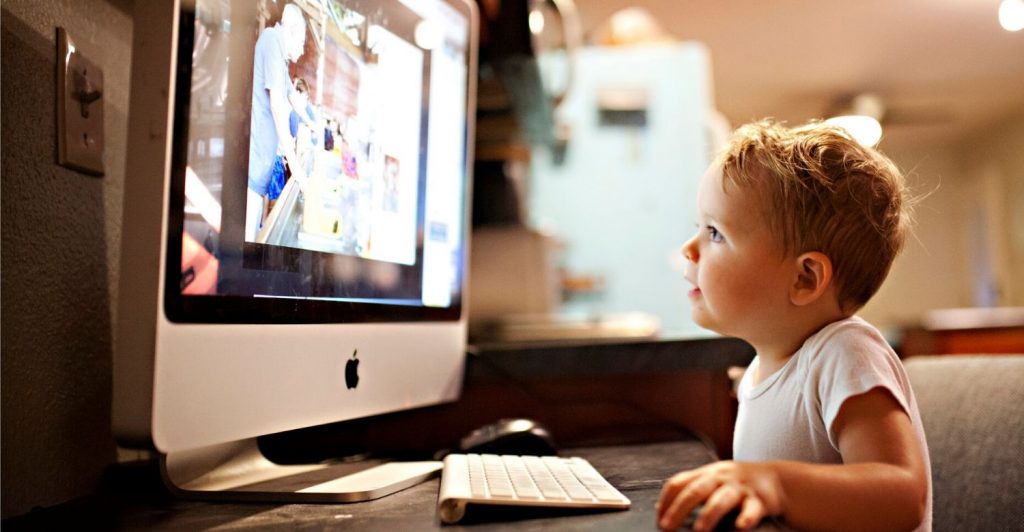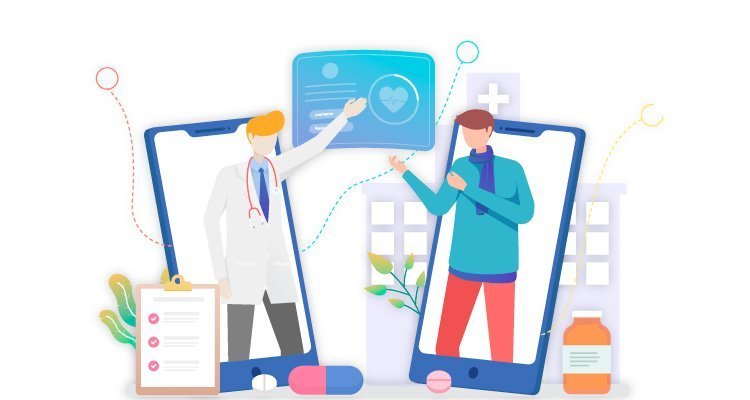Comitiva de Promoción del Sector Salud en Las Vegas, NV USA
El Baja Health Cluster formo parte de la Comitiva de Promoción del Sector Salud que visito Las Vegas, acompañando al...

A new study using sophisticated brain scans found an association between screen use and the development of young children’s brains, especially in areas related to language development, reinforcing the messages about minimizing screen time for preschoolers.
Let’s start with full disclosure: I know some of the authors of the research, which was published Monday in JAMA Pediatrics. The lead author is Dr. John S. Hutton, the director of the Reading and Literacy Discovery Center at Cincinnati Children’s Hospital. I wrote about some of his research a few years ago, when he looked at how young children’s brains react to hearing stories, and have even collaborated with him in writing about children and reading, one of my favorite topics (the world of pediatricians obsessed with picture books is small and closely, well, networked).
I am the national medical director of Reach Out and Read, the national organization that works through pediatric primary care to promote parents reading aloud with young children, and we will be celebrating our 30th anniversary this week in Boston. With that in mind, I’m especially interested in this study on how young children’s brains are shaped by the environment in which they grow.
Of course, this is a study of screen time, not reading, but there is a connection (we’ll get to that soon).
The researchers did special brain scans, diffusion tensor M.R.I.s, which assess the integrity of the white matter in the brain, on 47 healthy children ages 3 to 5, all from English-speaking households, mostly middle- to upper-middle class.
Parents were asked about their children’s screen use, and the researchers used a composite score called a ScreenQ, which has been developed and validated over the past couple of years, following the current American Academy of Pediatrics screen time guidelines, which are based on the best evidence we have to date.
A score of zero meant perfect adherence to those guidelines (no screens in the bedroom, child didn’t start watching TV or using apps till over 18 months, no exposure to violent content, total screen time for preschoolers an hour a day of high-quality programming, co-viewing with parents, and so on), and a 26 meant complete nonadherence (started watching under a year old, has screens in the bedroom, watches violent content, much more total screen time, not co-viewing, and so on).
Then the researchers compared the children’s ScreenQs to their brain scans, which showed the degree of myelination of the neurons, the coating of the connections between nerve cells with a fatty substance — myelin — which is what makes white matter white. It insulates the nerve cells and increases the efficiency of signaling.
“The more these areas are encouraged to talk to one another, whether language areas or executive function, the more that coating of the wires is stimulated,” Dr. Hutton said. “The amount of myelin around a nerve fiber is directly related to how often it’s stimulated, how often it’s used.”
Children reach developmental milestones when the relevant tracts in their brain are myelinated, he said; the language “explosion” at 18 months, for example. When the connection is fully myelinated between the part of the brain known as Wernicke’s area (comprehension of words) and Broca’s (production of speech), children go from understanding words to being able to say them. “The adage from neuroscience is the neurons that fire together wire together,” Dr. Hutton said. “Practice doing anything reinforces connections.”
The average ScreenQ score in the study was about 9, with a range of 1 to 19. About 41 percent of the children had a screen in the bedroom; about 60 percent had their own portable devices. The median screen time per day was an hour and a half, but the range was from none to 12 hours.
After controlling for age, gender and income, the children with higher ScreenQ scores had lower measures of structural integrity and myelination, especially in tracts involved with language and literacy skills.
The researchers also tested the children cognitively, looking at measures of language and early literacy. The results of the cognitive tests correlated well with the children’s screen exposure; the children with higher screen exposure had poorer expressive language and did worse on tests of language processing speed, like rapidly naming objects.
“This is the first study to document an association between higher screen time and brain structure and related skills,” Dr. Hutton said.
It is a cross-sectional study — a snapshot of these developing brains at one moment in time — and therefore by definition shows association, not causation. If there is a direct link, it may have less to do with the screens themselves, and more with what the screen time may be replacing in children’s lives.
“I would also strongly emphasize the issue of readiness,” Dr. Hutton wrote in an email. “Not so much ‘screens are bad,’ but ‘screens are not such a good idea right now.’ Akin to driving a car not bad, but driving at age 3-5 not such a good idea.” Tablets in particular, he wrote, may be “so powerful and encompassing, that they may not belong in the hands of infants-toddlers-preschoolers.”
So this is not meant to say that screens are intrinsically poisonous or to blame parents for allowing them. It’s a cautionary tale about the ways that the developing brain is shaped by experiences, and about what kinds of experiences may be most helpful and constructive — and how parents hold the keys to those experiences.
This is how it ties back to the idea of reading, as well as playing, telling stories, spending time outside and all the other things that can fill up a small child’s life. The same group has done another study that found positive structural effects on the brain associated with more stimulating home literacy activities.
From a brain science point of view, what young children need, Dr. Hutton said, is “experiences that are going to reinforce these networks more robustly.” If screens are taking the place of interacting with caregivers or talking or playing, children may not be getting the full benefit of the astonishing neural plasticity and potential of those early years.
“It’s all about experience,” Dr. Hutton said. “Did screen time interfere with something that would have been constructive — reading, playing, talking?”
Because the glory of the brain — and especially the young brain — is that plasticity. This is a cross-sectional study, a freeze-frame of brains in motion — the trends in any individual child could reverse and change. The message is not meant to be that some children are disadvantaged for life, but rather that in the early years of life, there’s additional evidence to suggest that nothing should squeeze out interactions, relationships and engagement — and to worry that the seductive power of screens may do just that.
“This is the youngest we’ve ever looked at this issue,” Dr. Hutton said. “These kids are hard to scan, they’re not sedated, it’s a pretty amazing age to look at it.”
More research is needed, more longitudinal studies, more ways of looking closely at the ways that our changing world affects our children’s brains, but we need to proceed with caution when it comes to screens and young children.
So the message to parents, over and over and over, should not be either screens-are-bad, or you’re-a-bad-parent. The message should be: In the early years, you are so important, and good parenting involves being there, interacting, talking, playing, singing, asking and answering questions, and of course, reading. This is a high-tech way of reinforcing a low-tech message.
“Kids this age, they need human experiences for their brains to develop optimally and reinforce these tracts,” Dr. Hutton said. “We just really need to be careful about making sure kids have access to these same human interactive experiences that probably our brains are wired to require.”
Source: https://www.nytimes.com/2019/11/04/well/family/screen-use-tied-to-childrens-brain-development.html?rref=collection/sectioncollection/well&action=click&contentCollection=well®ion=rank&module=package&version=highlights&contentPlacement=2&pgtype=sectionfront


El Baja Health Cluster formo parte de la Comitiva de Promoción del Sector Salud que visito Las Vegas, acompañando al...


Add the items of your interest in your planner, you can delete or add items anytime. The heart at the right corner shows the amount of items in your planner.

Submit your name, email and additional information you need about the providers. Our Concierge will send you all the information you need.
Address: Mision de Santo Tomas 2812, Zona Urbana Rio (4,69 km)
Tijuana
Available from 9:00 am – 19:00 pm